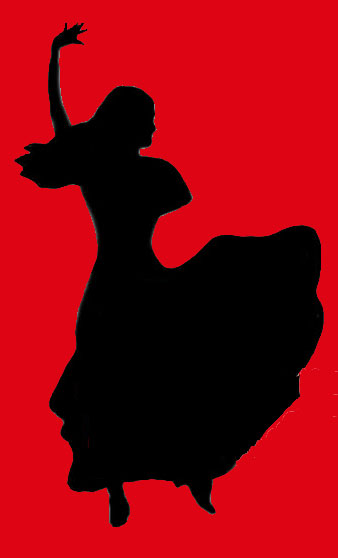

|
“I grew up in the Southern part of The Netherlands, and was living amongst Spanish immigrants. My family would travel to the South of France every year to Sete and Montpellier on the Cote d’Azur, an area that has many Gypsy performers roaming the streets. At the age of eight I was so enchanted by the beautiful Flamenco played by three of my cousins from the Mandos family, that I got my sister’s guitar and started learning and whenever I heard the flamenco music I would get up and dance. Unfortunately my cousins lived in a different town and over time I lost contact with them. Many Flamenco artists passed through my home town and when I was twelve I met the Gypsy Kings on several occasions. The then famous gypsy guitarist Manitas de Plata invited me to join his family and go with them to live in France. However my mother did not think this was a good idea. It was also at this time that I heard the music of the great Flamenco maestro Paco de Lucia, and was completely blown away by his music. I joined classes with Basilio from Madrid, who was a student from the famous Antonio of Madrid. This teacher only spoke Spanish and was very temperamental being extremely charming one moment and angry another moment when we didn’t get the steps right. It was here that I was introduced to his accompanist who became my teacher for guitar. El Payo (“The non-gypsy”) played exactly like his teacher the very famous Niño Ricardo from Sevilla. I would travel to Amsterdam to learn about Flamenco as well as playing it. El Payo had met many of the great and told me many anecdotes and would always talk about the essence of Flamenco. Many Spanish Flamenco artists visited his house. Paco de Lucia and his brother Ramon de Algeciras would visit regularly. During one of my guitar lessons I could sense someone was standing behind me. It was the famous Cuban Classical guitarist Leo Brouwer trying to give me a fright. On other occasions I met Quique Paredes, famous Spanish gypsy guitarist. He only spoke Spanish and I must have looked so frightened, because I didn’t understand his husky Andalusian accent. When I listen to the recording of some classes now I can hear him say: “No te preocupe mujer… no te voy a pega...” meaning “don’t worry, woman, I am not going to bite you”. On several other occasions, Pepe Habichuela, amazing Gypsy Flamenco guitarist from Granada, came to visit my teacher El Payo. Pepe was performing in the annual touring gypsy show Fiesta Gitana. His wife was dancing and his son came along to play the guitar. He was only seven but he could play so well already. We visited the house of another friend Alexander Smit, who played the sitar and the sarod. We unfortunately just missed Ravi Shankar who was at his house. Pepe was very interested in the Indian music. A couple of years later I moved to Utrecht and I would
visit the local illegal Spanish restaurant “Casa Sanchez”
every weekend. To get inside the restaurant people had to go through the
shop and make their way bending themselves slightly to pass underneath
Spanish hams and chorizos that were hanging from the ceiling. The decor
was simple. There were only a couple of dishes on the menu to choose from.
After 11.30 pm all doors would be locked and the local Andalusian immigrants
would start singing, playing and dancing. At day break we would all go
home contented. It was on one full moon that I met my to be husband Darcy
Lange (www.pacocampana.com), a New Zealander and dedicated student of another very famous Gypsy
guitarist Diego del Gastor, relative of Carmen Amaya. We would travel
to Bruxelles every week to the dance studio of Torre de Montijo, a Spanish
dancer of Madrid. After the classes we would go to the local Spanish club
and peña to hear more singing. We would cross the border again
in the very early hours. Whenever we could we would jump into the car,
drive down to Spain and visit the home town of Diego in Moron de la Frontera,
close to Seville. There we went to juergas that would go on all night
with Diegos family playing Bulerias and Tangos mainly. We visited the
many open air festivals and stayed at the house of Pedro Bacan, famous
gypsy guitarist who unfortunately got killed in a car accident. During
a Fiesta the famous gypsy dancer Miquel Funi came and asked me to elope
with him, something I now regret I didn’t do. He said if I refused
he would be very angry and leave without dancing. I had to disappoint
him. Miquel went. Everybody was sad he left. However he returned a couple
of hours later when the juerga was in full swing. He walked straight up
to me and got me to dance Bulerias with him. It was like magic. I didn’t
know his dance but we could just dance together as if we had been dancing
for many years. Then he disappeared. The true Flamencos are quite magic.
They have a certain “mana” about them. I didn’t know
what Cameron de la Isla looked like but I could tell he was special the
way he walked into the roadside bar wearing a white suit just as I was
having a coffee at five in the morning. He greeted me. People told me
who he was. I must say I really like his singing the best.” - Maria
Elena, 2007
|